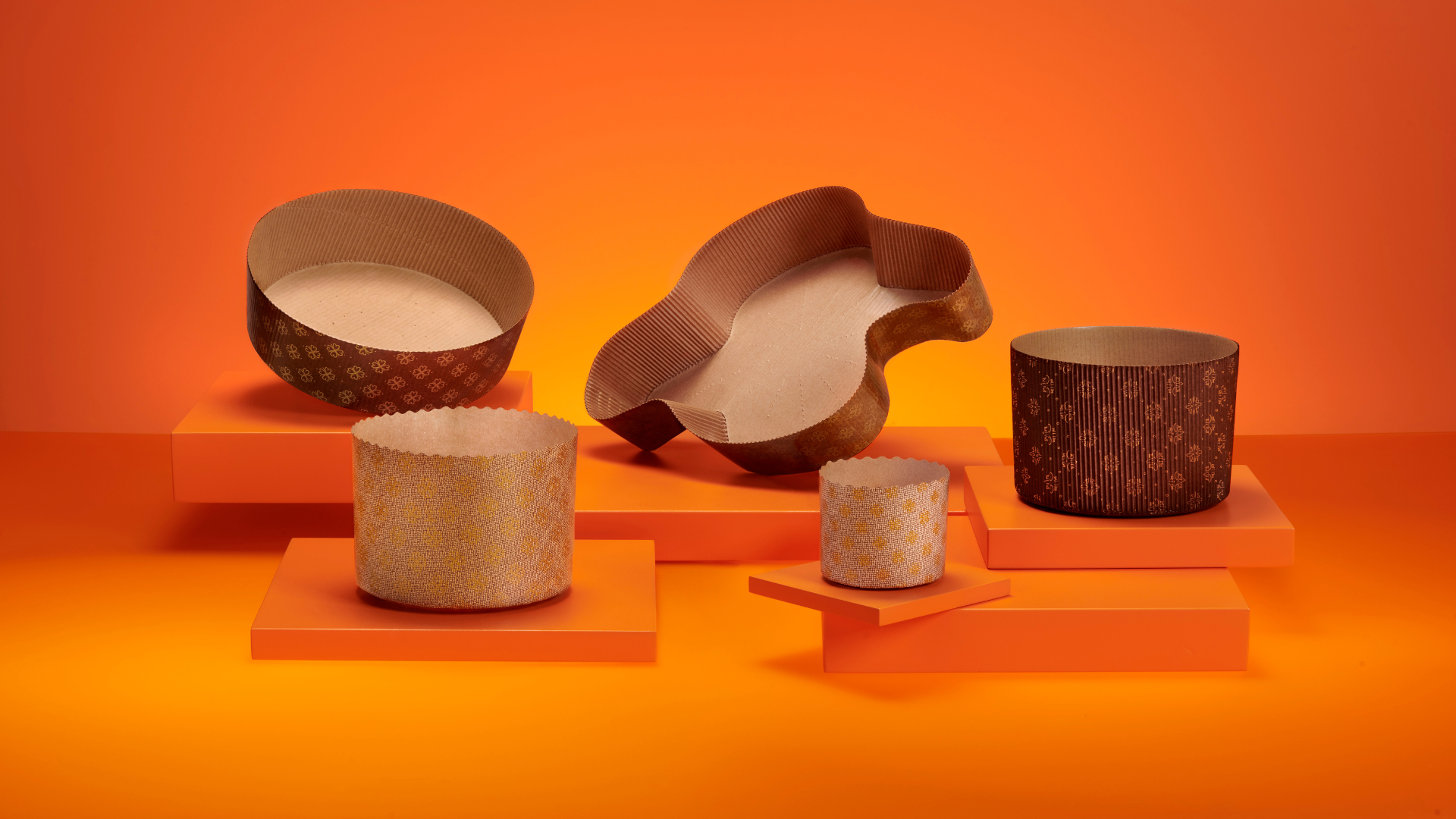4.3 min read
Gold patterns on paper baking moulds: 1 aspect that’s both aesthetic and functional?

When paper baking moulds hide the problem: the science behind gold patterns
Have you ever wondered why, during festive seasons like Christmas or Easter, the elegant setup that includes Panettone or Colomba often features baking moulds with gold patterns?
At first glance, you might think it’s simply an aesthetic choice. And yes: it is, but not only that.
Let’s explore the science and purpose behind those golden patterns on paper baking moulds.
Why the bakery and confectionery industry chooses paper baking moulds
Paper baking moulds are a smart choice, not just because they perform well, but also because they are sustainable. They combine functionality and eco-friendliness, allowing businesses to meet the growing demand for sustainable packaging without compromising quality or safety.

Our paper baking moulds are oven-resistant up to 220°C, freezer-safe down to -18°C, and available in a wide range of shapes, thicknesses, and perforation options to suit different production needs.
What’s more, paper baking moulds can be customised with various colors, prints, and patterns, making them a powerful tool to elevate brand identity and enhance product presentation, especially for seasonal and premium products.
But…Why do paper baking moulds have a gold pattern?
There are many reasons behind this seemingly simple detail.
What might seem like just a decorative choice is actually the result of practical, aesthetic, and even psychological considerations, especially when it comes to iconic products like Panettone and Colomba.
During the baking of rich, buttery products like Panettone and Colomba, some of the fat naturally migrates outward and is absorbed by the paper mould. This is a normal and unavoidable process, even when using grease-resistant, food-safe paper baking moulds.
However, with a very rich recipe, the visual result could be less appealing: dark, irregular stains on plain or light-colored paper could make your panettone look less premium, even when the product is perfectly baked, undermining the perceived quality, especially when the product is presented as a gift or part of a high-end offering.
That’s where the gold pattern comes in. It’s not just for looks, it plays a clever functional role:

The science behind gold patterns
-
It breaks visual continuity: these intricate golden patterns act as visual camouflage, distracting the eye and cleverly concealing any imperfections.
-
It blends with warm tones: gold, being a warm and neutral color, visually absorbs the natural shades of butter and browning, minimizing contrast.
-
It reinforces a sense of premium and care: baking can be messy, even with the most premium products. The right pattern helps maintain a polished, curated appearance.
A visual code that became tradition
Over time, the gold pattern has evolved from a functional feature into a true visual signature, an element closely associated with quality, tradition, and prestige.
Especially in the world of festive bakery, where Panettone and Colomba are not just food but part of a ritual, the gold-patterned baking mould has become a recognisable standard. It signals care, craftsmanship, and attention to detail, even before the first bite.
Today, many consumers instinctively associate this design with authentic, high-quality products, and many brands choose to preserve it not only for its practicality, but also to meet those visual expectations.
What started as a practical solution has become part of the identity and heritage of these traditional baked goods.
Learn the article about the history of Colomba baking moulds here!
Paper baking moulds are much more than simple containers: they are an integral part of the consumer experience and a key part of the product’s perceived value.
Have you ever wondered how many seemingly ‘decorative’ details actually hide a precise function?
Read our article about the strength of the paper, here!
Share your experience or questions with us on our LinkedIn company page!









